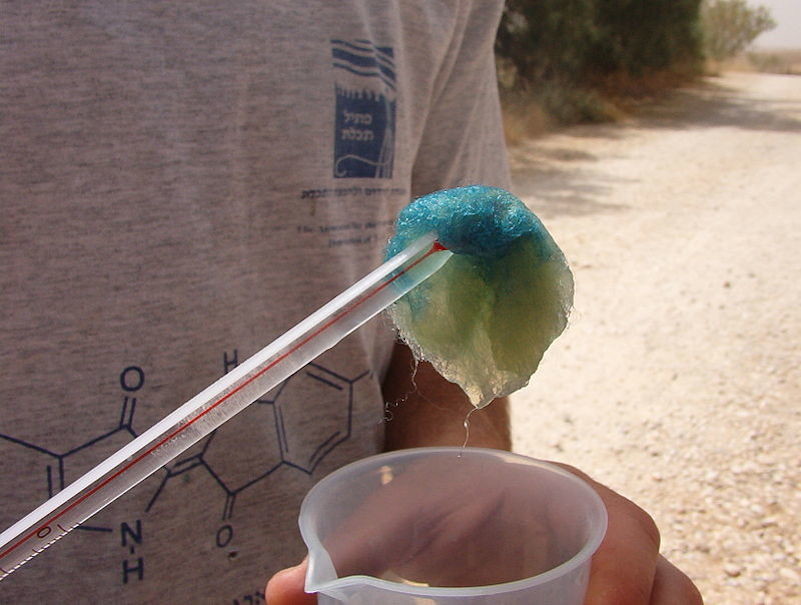Return of biblical tekhelet dye revives a mitzvah
One wouldn’t expect to find hundreds of snails in a landlocked town like Kfar Adumim, situated in the desert east of Jerusalem. Yet there they are, albeit mostly reduced to powder, having been shipped in from the Adriatic Sea for a purpose as old as the Torah itself.
Millions of Jews throughout history have recited the line in the daily prayers in which G-d instructs Moses to tell the Israelites to “place upon the tzitzit of each corner a thread of tekhelet.” Translated as “turquoise wool,” the blue strings of tekhelet (or techeilis) were to be inserted among the white tzitzit strings to remind the garment’s wearer of two of G-d’s greatest—and bluest—creations: ocean and sky. Yet many Jews probably have no idea that, thanks to a unique fusion of scientific and religious passion, this commandment is once again available to the masses after a hiatus of nearly 1,400 years.
“Techeiles is a quintessential example of science and Torah working hand in hand,” Baruch Sterman, a physicist and author (with his wife Judy) of “The Rarest Blue: The Remarkable Story of an Ancient Color Lost to History and Rediscovered,” tells JNS.org during a tour of the Kfar Adumim tekhelet factory. “After 25 years of studying it, I’m still learning about both aspects.”
The Talmud defines the tekhelet dye as derived from the “blood” of a rare amphibious snail known as the chilazon. The mitzvah to wear a thread of that dye on one’s tallit is mentioned multiple times in the Torah. But the tekhelet supply ground to a complete halt following the Muslim conquest of the land of Israel in 638 CE, when Jews were cut off from their local source of the chilazon. Though many theories surfaced over the years, even the most educated Jews had no concrete proof of which modern-day creature the Talmud’s chilazon actually was. Due to that mystery, the mitzvah of tekhelet was largely lost, becoming a source of puzzlement for centuries.

 70.0°,
Partly Cloudy
70.0°,
Partly Cloudy 







